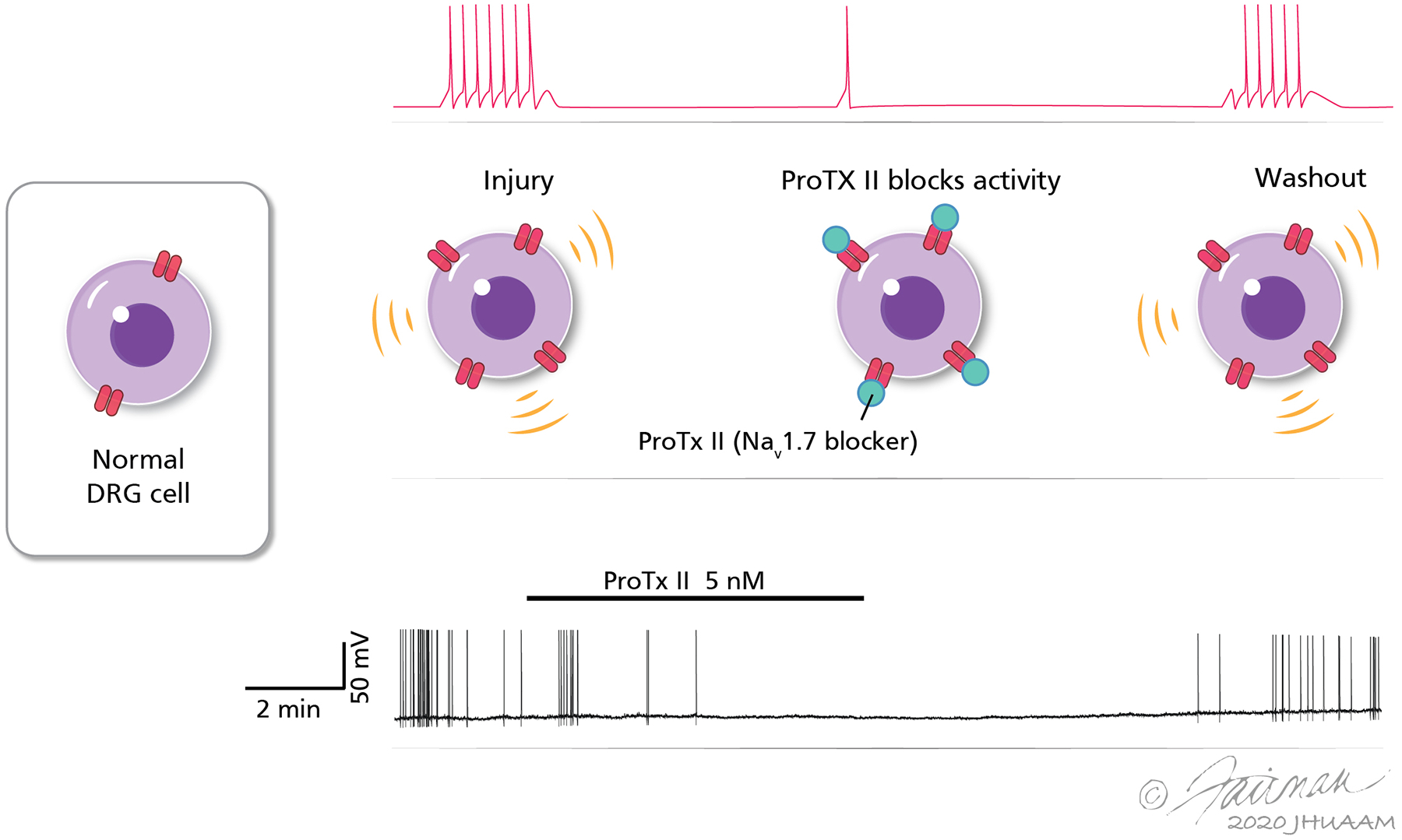Figure 3.

Sodium channels (Nav1.7) expressed in human dorsal root ganglion (DRG) neurons and satellite cells contribute to ectopic spontaneous activity. The top panel shows a schematic representation of increased Nav1.7 ion channel expression in DRG cells, based on immunohistochemical studies. The expression of Nav1.7 was significantly higher in DRG cells with spontaneous activity (SA) than in those without SA. Selective blockade of the Na channel results in suppression of SA. The bottom panel shows a representative recording of a DRG neuron from a patient with cancer-related neuropathic pain shows that SA is suppressed by bath application of the selective Nav1.7 blocker Pro-TX II. Activity recovers after wash-out of the drug from the bath. SA was observed only in human DRG neurons collected from dermatomes where patients had a history of radiating pain and/or radiographic evidence of nerve root compression. Adapted from Li Y et al. [86], courtesy Drs. Y. Li and P.M. Dougherty.
